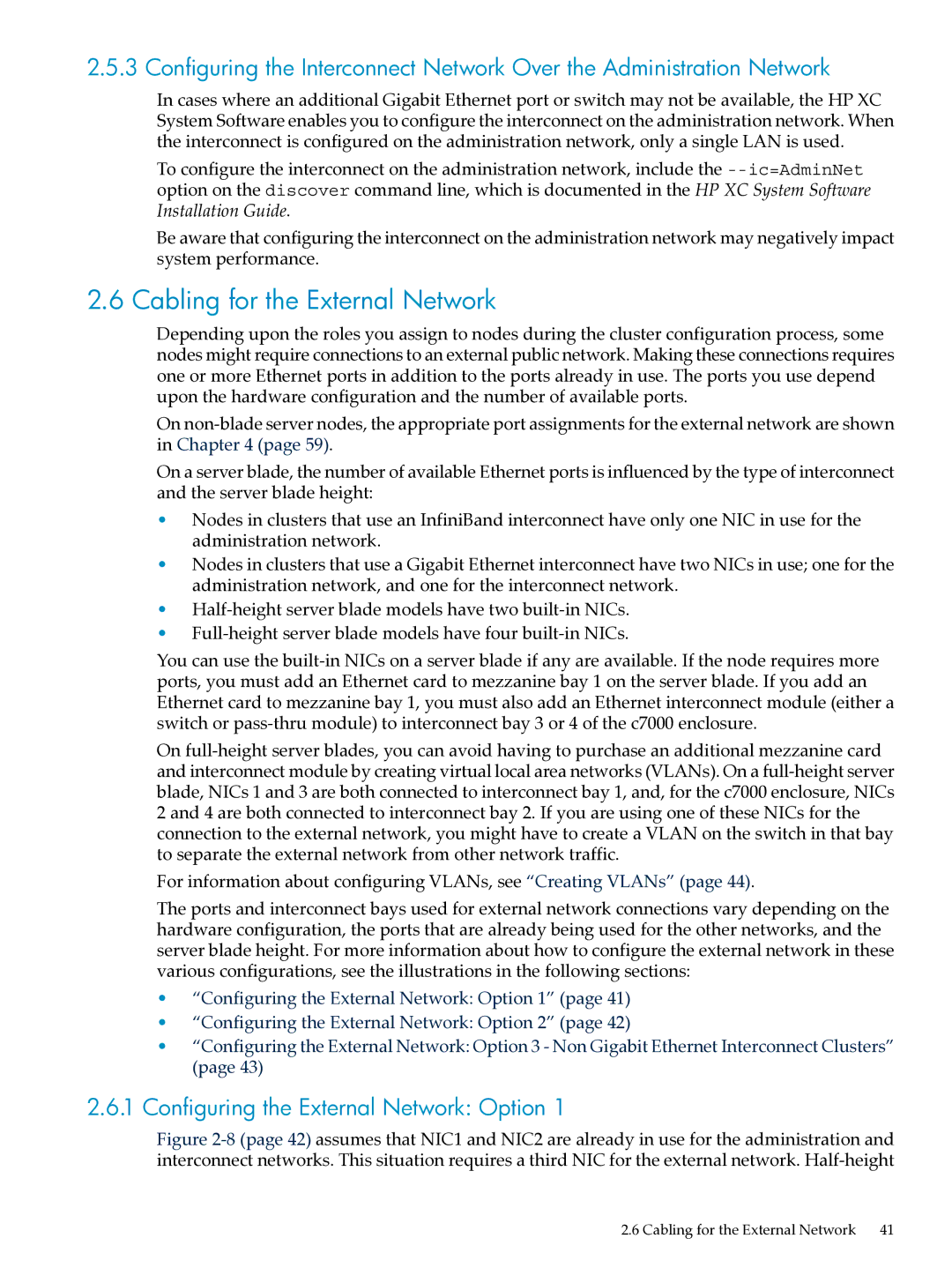2.5.3 Configuring the Interconnect Network Over the Administration Network
In cases where an additional Gigabit Ethernet port or switch may not be available, the HP XC System Software enables you to configure the interconnect on the administration network. When the interconnect is configured on the administration network, only a single LAN is used.
To configure the interconnect on the administration network, include the
Be aware that configuring the interconnect on the administration network may negatively impact system performance.
2.6 Cabling for the External Network
Depending upon the roles you assign to nodes during the cluster configuration process, some nodes might require connections to an external public network. Making these connections requires one or more Ethernet ports in addition to the ports already in use. The ports you use depend upon the hardware configuration and the number of available ports.
On
On a server blade, the number of available Ethernet ports is influenced by the type of interconnect and the server blade height:
•Nodes in clusters that use an InfiniBand interconnect have only one NIC in use for the administration network.
•Nodes in clusters that use a Gigabit Ethernet interconnect have two NICs in use; one for the administration network, and one for the interconnect network.
•
•
You can use the
On
For information about configuring VLANs, see “Creating VLANs” (page 44).
The ports and interconnect bays used for external network connections vary depending on the hardware configuration, the ports that are already being used for the other networks, and the server blade height. For more information about how to configure the external network in these various configurations, see the illustrations in the following sections:
•“Configuring the External Network: Option 1” (page 41)
•“Configuring the External Network: Option 2” (page 42)
•“Configuring the External Network: Option 3 - Non Gigabit Ethernet Interconnect Clusters” (page 43)
2.6.1Configuring the External Network: Option 1
Figure 2-8 (page 42) assumes that NIC1 and NIC2 are already in use for the administration and interconnect networks. This situation requires a third NIC for the external network. Half-height
2.6 Cabling for the External Network 41
